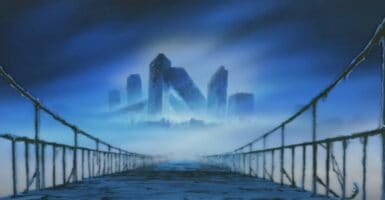Star Wars 1313 Might Be Dead, But It Helped Develop Ambitious New Motion-Capture Technology
This article is more than 2 years old
After Disney acquired Lucasfilm last year, the Mouse House put all existing properties in development on temporary hiatus until they could figure out what to do with their new company. Eventually, Disney shut down LucasArts, the video game division of Lucasfilm, and that also meant the death of Star Wars 1313, a promising project that would have cast players as bounty hunters exploring the seedy underbelly of organized crime on the planet-sprawling cityscape of Coruscant. While the game itself might be lost, but a new concept video, seen above, reveals how it its production helped develop cutting-edge real-time motion-capture technology that could eventually eliminate or lessen the need for lengthy post-production process on effects-heavy films.
According to the Inquirer, Lucasfilm held a presentation for BAFTA in London, England, “where they proposed a new paradigm in which feature film production stops at production, with no need for editing or sound mixing or any other post processes.” The video above shows off what LucasArts and Industrial Light & Magic were working on while developing Star Wars 1313. The process called “real-time motion capture,” and it made it possible for video game engineers to render graphics on the spot, theoretically eliminating or at least shortening the post-production process. Lucasfilm’s Chief Technology Strategy Officer Kim Libreri explains:
“Everyone has seen what we can do in movies,” Libreri says of what modern video game technology could lead to. “…We think that computer graphics are going to be so realistic in real time computer graphics that, over the next decade, we’ll start to be able to take the post out of post-production; where you’ll leave a movie set and the shot is pretty much complete.”
The results from the video are seamless and it looks like the concept video is ready for production and distribution. It’s stunning and looks realistic! Libreri continues:
“If you combine video games with film-making techniques, you can start to have these real deep, multi-user experiences,” she added. “Being able to animate, edit and compose live is going to change the way we work and it’s really going to bring back the creative experience in digital effects.”
The technology involved with real-time motion capture was the beginning of Star Wars 1313. After designers and engineers at LucasArts made a short film with the technology as a proof-of-concept, they believed the video game engine was powerful enough to make a full video game. While it’s doubtful that the engine would be used during the production of Star Wars: Episode VII for director J.J. Abrams, Libreri hopes to use this technology instead of post-production to make a full-length motion picture one day.
“I think that the current way that we make movies is very pipeline stage process, takes away a little bit of the organic nature of a movie set or real environment. I’m hoping real time graphics technology brings back the creative possibilities that we have in the real world,” Libreri said.
“Let’s not dismiss the artistry you put into a final shot, we do spend a lot of time steadily tweaking blooms and lens flares or the lighting in a shot, but we’ll be able to get a lot closer so that more run of the mill windows replacements will be created interactively on stage.”











